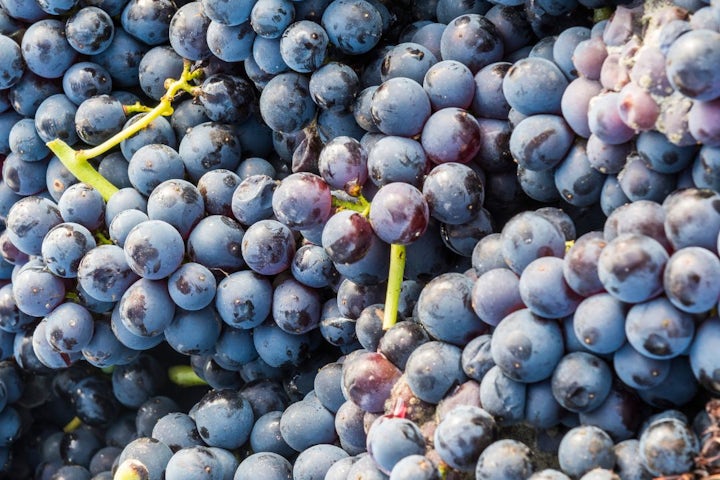
2019 Prophets Rock Home Pinot Noir
$ 70.00 AUD
Prophet’s Rock was first planted in 1999 in what is a breathtaking part of Bendigo in the Cromwell Basin and one of the few places in the world where pedogenic limestone is found (see ABOUT page for a detailed brief). Paul Pujol is the winemaker and part owner since the first vintage in 2005 and has spent time working overseas in France at both Alsace for Kuentz-Bar and Comte de Vogue in Burgundy so has a superb grounding in aromatic textured whites and one of the greatest expressions of Pinot Noir.What’s exciting about these wines is that they are all wild fermented, very low yields per wine, and very little intervention. They hold the wines back to ensure the wines have enough time on lees (particularly the Gris) and in barrel for the Pinot Noir.
Region - New Zealand
Type - Red
Year - 2019
Winery - Best of New Zealand
Grape - Pinot Noir
Volume - Standard - 750ml
About the wine
Tasting notes
The grapes were sourced from the Home Vineyard on the impressive North-facingslopes of Chinaman’s Terrace, located in the Bendigo sub-region of Central Otago.Planted in 1999/2000 and will be certified organic from the 2019 vintage. Starts at325 meters above sea level, rising up to 400 meters. North West exposition. Thisstunning site has soil featuring clay and chalk mixed with schist and quartz. Tounderstand the soil type here it’s important to know how the Cromwell Basin wasformed.The site is a mixture of Clay and Limestone. The terrace was formed/carved by aglacier, 650,000 years ago. Then a second Glacier came 400,000 years ago to formfurther topography changes. Due to the first Glacier creating the first terrace theschist mother rock was left exposed on the top soil. Schist weathers and decomposesbecoming fine particles, eventually Clay. Calcium particles within this Schist werereleased during this decomposition. Because there is Clay it stopped the calciumbeing washed away creating a layer of calcium on top of the Clay.Then this changesto chalk/calcium carbonate = Pedogenic lime. The low rainfall of the Bendigosubregion (dry) also helped to retain this soil. This then gives a sandwich of clay/windblown topsoil, limestone and then more Clay.In conclusion – The combination of Clay, Time and Dry climate = gives the possibilityto create limestone in an area with no former sea. Pedogenic lime is formed by slowformation of time as opposed to the sea being forced up from below (Parisbasin/Burgundy). It’s a lot younger than the classic limestone found in France. Ironoxide is also present in the sub region.Low yields = 35hl/ha. The grapes were handpicked and destemmed with a highproportion of whole berries going into the fermenters. Wild ferment. Just one pigeageapprox per vintage. The wine spent 17 months in French oak barrels of which 30%were new. Bottled unfined, unfiltered.
Wine descriptors
Captivating and Complex, Earthy and Savoury, Elegant and Fine, Juicy and Fruity, Minimal Intervention, Smooth and Seductive, Something Special, Totally Smashable
Fruit aromas & flavour
Cherries, Dark Berries, Plum, Red Berries
Other aromas & flavour
Florals, Herbals, Meaty, Minerality, Spices
Food pairings
Pork
Cheese
Pizza
Fish
Red Meat
Pasta
BBQ
Vegetables
Poultry
Shellfish
Oysters
Spicy Foods
Cured Meats
Desserts
Expert review
Deep brilliant ruby with a sweetly perfumed and deeply floral nose of purple rose, black cherry, ripe red to black fruit, Davidson plum, garrigue herbals, cardamom, nutmeg, cocoa nib, gently caramelised oak and just a hint of game. A bit heady with alcohol. In the mouth it’s juicy, concentrated and powerful with a drive of beautifully sweet red and black fruit that have ripeness, richness, depth and clarity to them. Smoothly textured and totally addictive, this flows like silk across the palate, reaching every nook and cranny and spoils your taste buds with decadence. Vibrant acidity carries the fruit while fleshy tannins impart a gentle chew of tension. It drives long and far, unrelentingly, and ends with the slightly bitter flavours of black cherry stones. Addictive and delicious!

Pinot Noir
Pinot noir (French: [pino nwaʁ]) is a red-wine grape variety whose name roughly translates to describe the tight clusters of a pine cone. Its home is France's Burgundy region, particularly Côte-d'Or. It is also planted in Argentina, Australia, Austria, Bulgaria, Canada, Chile, northern parts of Croatia, Czech Republic, England, the Republic of Georgia, Germany, Greece, Israel, Italy, Hungary, Kosovo, the Republic of Macedonia, Moldova, New Zealand, Romania, Serbia, Slovakia, Slovenia, South Africa, Switzerland, Ukraine, United States, and Uruguay.





















